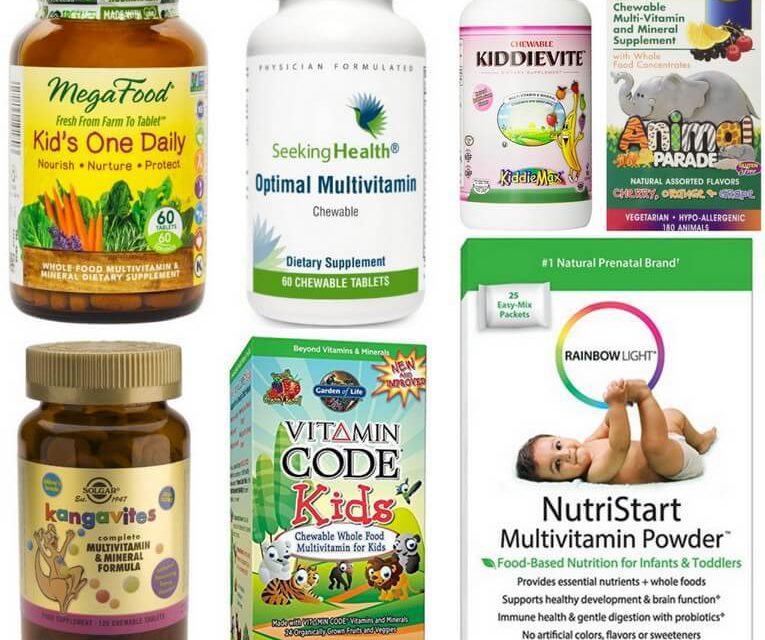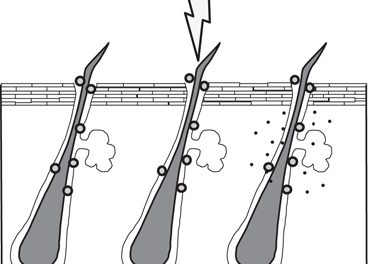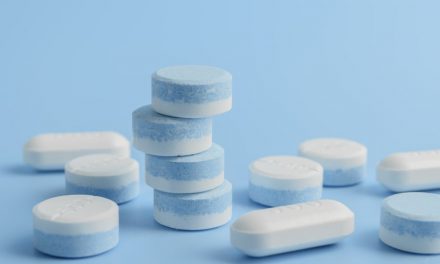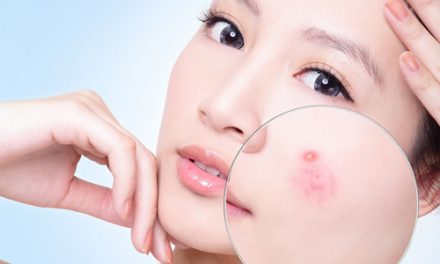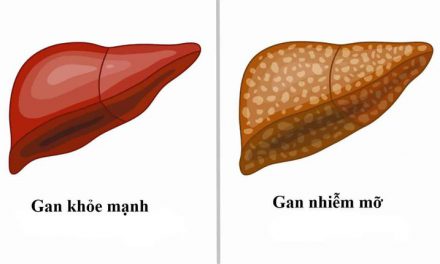Kids Vitamins can be confusing. There are so many questions: Is there a such thing as an “unhealthy” kids vitamin? Do you need a vitamin with iron? Which vitamins are the best? Do kids even need vitamins at all?
.
Recently, I was talking with a friend and realized that a lot of these questions can be really overwhelming because there is so much information out there! So I did a bunch of research and found the healthiest kids vitamins out there today. This is your guide to multivitamins for kids: what to buy, what not to buy, and what to look out for!
.
So first of all, do kids even need vitamins to begin with?
Most pediatricians will tell you that it’s not necessary for most healthy children who are growing normally (source). For kids who eat well and eat a variety of food, they can get all of the nutrients they need from whole foods. But many kids are very picky, or don’t eat a lot of food, or aren’t growing well, and that makes a lot of parents worried that they aren’t getting the nutrients they need! In those cases, I’d recommend talking to your pediatrician, and if they suggest giving your child a multivitamin then definitely do so.
.
When buying a multivitamin, what should you look for?
So to start, kids multivitamins generally come in two groups: 1) With Iron and 2) Without Iron. You should buy a multivitamin that doesn’t exceed 100% daily value of most of the vitamins for your child’s age group – primarily Vitamins A, E and K (that will be indicated by the label on the back). The exception here is for Vitamin C and other water-soluble vitamins. Vitamin D is a fat soluble vitamin but is ok to have at more than 100% of the daily value because most people are deficient (including kids) and Vitamin D isn’t toxic unless it’s in exceptionally high doses which wouldn’t be in a daily vitamin. If the vitamin does have more than 100% of A, E and K then I would just give your child half the dose on the bottle.
It’s also important to look for the ingredients that are added to the tablet that aren’t vitamins. Ingredients like: Sorbitol, carrageenan, artificial colors and flavors (Red #40 anyone?), aspartame, sucralose, to name a few! You definitely don’t want to be dosing your child with these ingredients on a daily basis along with their multivitamin.
.
So let’s start with what not to buy: The answer here is most of the commercially available, leading brands of multivitamins. The biggest offender of which is Flinstones Chewable Vitamins.
What’s crazy is that on the label, Flinstones calls out that they are “Pediatrician’s #1 Choice.” And most people do buy Flinstones vitamins! I even remember eating them when I was a kid. They tasted so good! It was like a treat every morning. And if you are giving your kids Flinstones vitamins right now, don’t feel bad! You are not alone, and thanks to all of the deceptive marketing out there, there’s no way you’d know that Flinstones isn’t the best choice for any child. Before doing all of this research I didn’t realize how problematic they were, and why it’s important to switch away from them.
.
The reason they are problematic, is because there are a ridiculous number of offensive ingredients in Flinstones Vitamins that truly, should not be there at all, and are not necessary. Take a look at two of their best sellers (I’ve highlighted in red all of the ingredients to avoid):
.
#1 | Flinstones Chewable Vitamins with Iron
Sorbitol, Mannitol, Fructose, Sodium Ascorbate, Ferrous Fumarate, Silicon Dioxide, Carrageenan, Natural and Artificial Flavors, FD&C Red #40 Lake; Less Than 2% Of: Aspartame†, BetaCarotene, Cholecalciferol, Cyanocobalamin, D-Calcium Pantothenate, dl-Alpha-Tocopheryl Acetate, FD&C Blue #2 Lake, FD&C Yellow #6 Lake, Folic Acid, Magnesium Stearate, Niacinamide, Pyridoxine Hydrochloride, Riboflavin, Soy Lecithin, Thiamine Mononitrate, Vitamin A Acetate.
#2 | Flinstones Chewable Complete
Granulated Calcium Carbonate (Calcium Carbonate, Dextrose Monohydrate, Sugar, Maltodextrin, Microcrystalline Cellulose), Sorbitol, Sodium Ascorbate, Ferrous Fumarate, Natural and Artificial Flavoring, Pregelatinized Starch, dl-Alpha Tocopheryl Acetate; Less Than 2% Of: Beta-Carotene, Biotin, Calcium Pantothenate, Cholecalciferol, Cupric Oxide, Cyanocobalamin, FD&C Blue #2 Lake, FD&C Red #40 Lake, FD&C Yellow #6 Lake, Folic Acid, Gelatin, Magnesium Oxide, Magnesium Stearate, Mono- and Diglycerides, Niacinamide, Potassium Iodide, Pyridoxine Hydrochloride, Phytonadione, Riboflavin, Silicon Dioxide, Soy Lecithin, Sucralose, Thiamine Mononitrate, Vitamin A Acetate, Zinc Oxide.
.
Let’s take these one by one:
- Sorbitol and Mannitol are sugar alcohols. They have been known to cause digestive issues and discomfort in some people because they can’t be digested properly by the body.
- Carrageenan is an emulsifier that thickens products, but it has been linked to high levels of inflammation in the body, digestive issues, etc.
- Maltodextrin: this is an indicator that the food is highly processed. It’s used as a thickener, filler, or preservative in many processed foods, and it can cause spikes in your blood sugar because it has a high glycemic index.
- Natural and Artificial Colors – Red #40, Blue #2, Yellow #6. I mean, #wtf. What are these doing in a kids vitamin? These are so problematic and have been linked to all kinds of health problems including allergies, hyperactivity, learning impairment, irritability and aggressiveness.
- Artificial flavors – also highly processed and unnecessary in a kids vitamin.
- Aspartame and Sucralose – this is what diet sodas are sweetened with, and are highly controversial. Research hasn’t proven one way or the other whether they lead to long term health issues, but it has been proven that they cause an insulin-response by the body (because your body thinks you are eating sugar when you are not – source). If you wouldn’t give your child a diet coke, you shouldn’t give them a vitamin with this in it!
- Mono- and Diglycerides is one of the most widely used emulsifers to keep oil and fat from separating. It’s just an indicator that the food is processed.
- Oh, and gelatin. While this isn’t a harmful ingredient, it kind of sucks for any vegetarians or vegans out there who are giving their kids this vitamin without knowing that it’s not actually veggie-friendly.
So what should you buy instead? What’s the healthiest multivitamin out there?
Luckily there are tons of options! Below is a list of my favorites: they all are made with natural ingredients, have no weird preservatives or any of the ingredients above added, and some even derive the vitamins from organic food sources which I absolutely love because they are better absorbed by the body that way.
With Iron:
- Natures Plus
- Rainbow Light
- Seeking Health (Note: this one has microcrystalline cellulose which I don’t love as an emulsifier because it’s made from refined wood pulp – but it’s not harmful as far as I can tell from a research standpoint – it’s not absorbed by the body so it just passes through).
Without Iron:
- Garden of Life – While it doesn’t have iron, I do love this brand. I take their women’s multivitamin daily and I love it. All of their vitamins come from organic whole foods, and they don’t have anything weird added to their vitamins. They are organic, clean, and healthy. There is stevia added here, but it’s listed as “Organic Stevia Leaf” – which is the only form of Stevia I’m ok with. What I do avoid is “stevia extract” could literally mean anything and have anything added to it.
- MegaFood – This is another brand that I love for vitamins. It doesn’t have iron but if you decide to go with this or Garden of Life, there is an iron-only supplement you can add to their diets!
- YummiBears Organic Multivitamin (or) the YummiBears non-organic Complete Multivitamin
Iron Only Supplement: This is a good option if you decide to buy Garden of Life or MegaFood, because it will add the iron missing from those vitamins back into your child’s diet.
Runner Ups:
- Solgar. This is one I’d get only if you can’t find any of the other ones on the list above, because while most of the ingredients are good, it does have carrageenan which – as I mentioned – it’s better to avoid.
I hope this helps you in navigating the world of kids’ vitamins!

